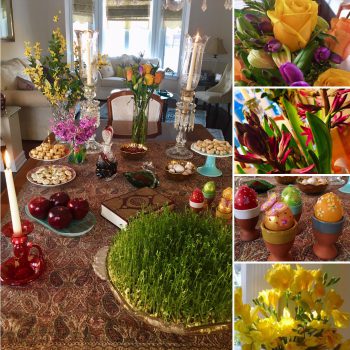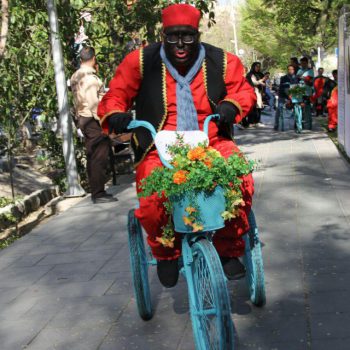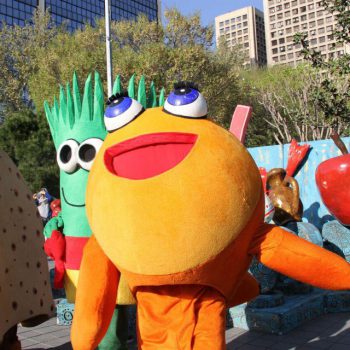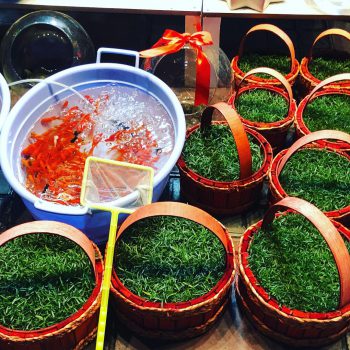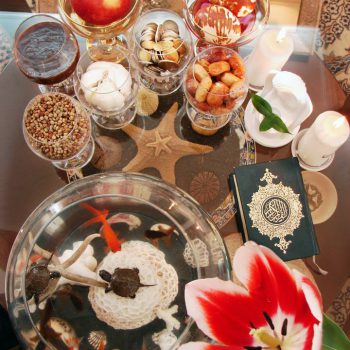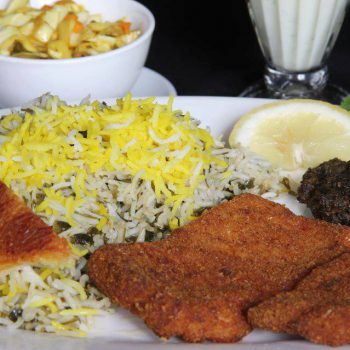Iranian New Year Nouroz 19 March – 2 Apr
the Festival”Noe-Rooz” celebrates the coming of spring by nations of Aryan heritage or Iranians. (When referring to Iranian nations, we include nations that have a common foundation, history and language.)
In the Persian language “Noe” means “new”, and “Rooz” means “day”. Hence, “Noe-Rooz” means “new day”.
Noe-Rooz occurs at the exact time of the Vernal (spring) Equinox, when the length of night and day are equal. Translated literally, Equinox means “Equal Night”. Because the sun is positioned above the equator, day and night are about equal in length all over the world during the equinoxes.
A true Earth year is 365 days, 5 hours, 48 minutes and 64 seconds, which the time is taken for the Earth to complete one orbit around the sun.
Every fourth year an extra day is added to the calendar (called a Leap Year), to adjust for this extra 1/4 of a rotation each year. This correction was introduced at the time of Julius Caesar (46 B.C.) and allows the calendar to always measure the location of the Earth in its orbit about the sun accurately. Thus, the Spring Equinox can fall on different days (either March 20th or 21st). Eyd Noe-rooz Celeberate FestivalPeople around the world have recognized the vernal equinox for thousands of years. There is no shortage of rituals and traditions surrounding the coming of spring. Many early peoples celebrated at this time, for the basic reason that their food supplies would soon be restored. The date is significant in Christianity because Easter always falls on the first Sunday after the first full moon after the Vernal Equinox. It is probably no coincidence that early Egyptians built the Great Sphinx so that it points directly toward the rising of the Sun on the day of the Vernal Equinox. The ancient Iranians celebrated two seasons. One was “Zayana” or winter, (the festival of Mehr’gaun) and the other “Hama”, summer, celebrated by the festival of Noe-Rooz to announce its coming.
The new year’s ceremonies and tradition.
Haji Firooz
The traditional herald of the Noe-Rooz season is called Haji Firooz. He symbolizes the rebirth of the Sumerian god of sacrifice, Domuzi, who was killed at the end of each year and reborn at the beginning of the New Year. Wearing black make up and a red costume, Haji Firooz sings and dances through the streets with tambourines and trumpets spreading good cheer and the news of the coming New Year.
The Spirit of Renewal
In parallel with the rebirth of nature, extensive spring-cleaning is a national tradition observed in almost every household in Iran. This is also extended to every persons attire, and it is customary to buy at least one set of new clothes. On the New Year’s Day, families dress in their new clothes and start the twelve-day celebrations by visiting the elders of their family, then the rest of their family and finally their friends. On the thirteenth day families leave their homes and picnic outdoors.
Haft Seen.
Noe-rooz Celeberate Festival
The Zoroastrians of ancient Persia celebrated the creation of life by offering their god, Ahura Mazda, seven trays filled with symbolic objects representing truth, justice, good thoughts, good deeds, virtue, prosperity, generosity and immortality.
Today, the tradition is continued through the setting of the table or spread with an arrangement of several items of which seven of them start with the Persian letter Seen (in English S). The Persian translation for the number seven is “Haft”, hence, “Haft Seen” means “Seven S’s”. It is customary for the family to gather round the Haft Seen spread a few hours before the New Year and recite poems from Hafez and verses from the Holy Koran. At the exact moment of the New Year, the oldest person in the family continues the traditions by hugging and wishing each member well and offering sweets, pastries, and coins. Banknotes are sometimes placed between the pages of the Holy Koran to bless them before they are given to the younger members of the family.
The contemporary Haft Seen spread includes seven of the following items:
Sabzeh – wheat or lentils grown in a tray or dish prior to Noe-Rooz to represent rebirth
Samanu – a sweet pudding made from wheat germ, symbolizing affluence
Senjed – the dried fruit of the lotus tree which represents love
Seer – which means garlic in Persian, and represents medicine
Seeb – which means apple in Persian, and represents beauty and health
Somaq – sumac berries, which represent the colour of the sun rise
Serkeh – which means vinegar in Persian, and represents age and patience
Sonbol – the hyacinth flower with its strong fragrance heralding the coming of spring
Sekkeh – coins representing prosperity and wealth.
The other items in the spread include:
Shirini – Sugar cookies and pastries
Candles – representing enlightenment and happiness
Mirror – representing the reflections of creation on the first day of spring
Painted eggs – representing fertility
A bowl with goldfish – representing life and the end of the Zodiac sign of Pisces
An orange in a bowl of water – representing the earth floating in space
Rosewater – thought to have magical cleansing powers
A copy of the Holy Koran and Divan-e Hafez
Growing Sabzeh for New Year
Growing Sabzeh, green shoots (sprouts), are a major part of getting ready for Noe-Rooz. It is a must to have it on Haft sin spread and though growing it sounds easy it needs experience. The process normally starts 3 to 4 weeks before Noe-Rooz depending on how tall you want your Sabzeh. Special lentils (Adass) and or whole-wheat seeds are sold at Iranian stores and you should use these special ones, otherwise they won’t work. Soak the seeds in water for two days and then put them on a shallow plate and cover it with a paper towel and place in a sunny location. Squirt water over the shoots several times a day, and again cover with the paper towel. They should not be either dry or soaked, just enough water to allow them sprouting. Once the sprouts appear remove the paper towel and let it grow. Women in the family normally grow Sabzeh and several are made at the same time just in the case if they rot and go moldy which they often do. Some ladies have a reputation for having green hands and growing great Sabzeh. They might be asked to grow some for friends and relatives. All Iranian stores sell the already grown ones and many people will simply buy them.
New Year’s Dishes.
Sabzi Polo Mahi
The New Year’s Day traditional meal is called Sabzi Polo Mahi, which is rice with green herbs served with fish. The traditional seasonings for Sabzi Polo are parsley, coriander, chives, dill and fenugreek.
Reshteh Polo
Another traditional dish Reshteh Polo, is rice cooked with noodles which is said to symbolically help one.
Seezdah Bedar
The thirteenth day celebrations, Seezdah Bedar, stem from the belief of the ancient Persians that the twelve constellations in the Zodiac controlled the months of the year, and each ruled the earth for a thousand years. At the end of which, the sky and the earth collapsed in chaos. Hence, Noe-Rooz lasts twelve days and the thirteenth day represents the time of chaos when families put order aside and avoid the bad luck associated with the number thirteen by going outdoors and having picnics and parties.
At the end of the celebrations on this day, the sabzeh grown for the Haft Seen spread (which has symbolically collected all the sickness and bad luck) is thrown away into running water to exorcise the demons (divs) and evil eyes from the house hold. It is also customary for young single women to tie the leaves of the sabzeh, prior to discarding it, symbolizing their wish to be married before the next year’s Seezdah Bedar. When tying the leaves, they whisper…succeed in life.

